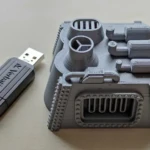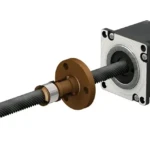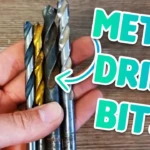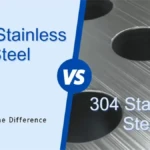The evolving landscape of CNC machining: Shaping key trends in 2025 and beyond
The CNC processing industry is at a critical point, driven by ruthless innovation and a shift in global demand. As we approach 2025, manufacturers must drive trends that redefine accuracy, efficiency and sustainability. For businesses looking for state-of-the-art solutions, it is crucial to understand these transformations. This is an analysis of the power of converting CNC processing power in 2025.
1. Supernatural and lighting manufacturing
The factory is embracing more and more Fully automatic workflowAI-powered CNC system runs unmanned operations overnight ("The light comes out" Production). This will cut the advance time by 40-60%, while ensuring 24/7 output. Vision systems and adaptive machining compensate tool wear in real time, eliminating human intervention in routine tasks. Logistics Integration – Automatic pallet code changer and robot partial processing – further streamlined process. Expected Level 1 Supplier Likes Great Take advantage of this for quick, error-free turnaround.
2. AI-driven accuracy and prediction analysis
Beyond automation, Generated AI Innovating processing. The algorithm optimizes the toolpath for minimal material waste, predicts machine failures (reduces downtime by 30%), and dynamically adjusts feed/speed based on sensor data. Cloud-based analytics translate historical working data into actionable insights – balancing cost, speed, and quality. For mission-critical departments such as aerospace and medical implants, AI’s defect prevention capabilities are not commercially acceptable.
3. Five-axis advantages in complex geometric shapes
The demand for complex, single-setting processing is exploding. Five-axis CNC not only "Better than three axes"- This is the basis for the complex profile, deep pockets and curved surfaces of turbines, prosthetics or AR/VR hardware. go ahead Turbine milling (5-axis motion at high rpms at the same time) Enable the mirror surface without auxiliary polishing. exist Greatour 5-axis vertical milling center always achieves ±0.001mm tolerance on aerospace alloys, titanium and plastics.
4. Sustainable machining is located in the center stage
Regulatory pressure and ESG goals are driving "Green processing" Entering the mainstream:
- Material efficiency: AI-powered nesting reduces waste by 15-30%.
- Energy Recovery: The regenerative driver converts brake energy into reusable power.
- Coolant innovation: Biodegradable coolants and minimum quantitative lubrication (MQL) reduce chemical use by 80%.
Leading manufacturers now audit carbon footprints for each section – metrics Great Prioritize through solar power facilities and recycling materials programs.
5. Digital twins and virtual debugging
There are no more expensive trial and error. Digital twins simulate the processing process in real time, verify the G-code, predict collisions and predict thermal drift errors. Pair with this AR assisted maintenance– Technicians navigate repair guides through smart glasses and unplanned downtime drops. Digital threading integration (from CAD to QA) is expected to become the standard by 2025.
6. Customized on demand and micro batch
Massive customization is eclipsing. CNC flexibility supports microbatches (1-100 units) for prototype, R&D and niche industrial applications. The cloud platform allows customers to submit designs for instant references and track them through real-time production. Great One-stop model – a roof with mechanical, surface surfaces and heat treatment – is better than this agile, customer-oriented future.
7. Through localized supply chain flexibility
Manufacturers reject fragile global supply chains after the pandemic. Regional production "Hub" (like Great exist [Region Name]) Minimize latency with on-demand digital inventory. Tracking distributed manufacturing through encrypted blockchains – auditing materials from the factory to part of the material – adds transparency.
Conclusion: Prepare for a smarter, more adaptable future
The 2025 trajectory of the CNC industry is clear: efficiency through AI, sustainability as empowerment and flexibility through automation. For engineers and procurement teams, choosing a partner is not about the machine, but about the expertise to coordinate these trends. Great Combining five-axis precision, ecological awareness practices and end-to-end solutions, transforming complex designs into flawless reality.
With the tightening of the tolerance window and advancement of materials science, only forward-looking manufacturers will flourish. Embrace the Future – A partnership that surpasses competitive with priority to R&D, agility and uncompromising quality.
FAQ: Unveiling CNC machining in 2025
Q1: Why choose five-axis CNC to exceed three-axis?
Five-axis machining handles complex angles in a single setup – ideal for bending aerospace impellers or medical implants. Compared to multi-stage three-axis work, it reduces requantitative errors, improves accuracy (±0.001 mm), and reduces lead time by 50%.
Q2: Can AI really prevent processing errors?
Absolutely. AI algorithm analyzes sensor data (vibration, temperature, power draw) to detect abnormalities such as tool wear or material inconsistency forward Flaws occur. This predictive maintenance reduces the waste rate by about 25%.
Question 3: Are sustainable processing practices more expensive?
Initially, yes, but the ROI was quick. MQL systems reduce coolant costs, energy-saving spindles with lower power bills and waste reduction software saves materials. By 2025, non-compliant regulatory fines may offset any upfront investment.
Q4: How fast is the turnover speed of custom parts?
With automated workflows, super-scheduling (e.g. 60k rpm spindles), and digital references, delivery time is drastically compressed. Aluminum prototypes and other items can be shipped within 48 hours Great. Under this model, batches of 1-500 units flourished.
Q5: What materials can modern CNCs handle?
Beyond metals (aluminum, steel, titanium), advanced CNC process composites, ceramics, peeps, and even materials like Inconel® or Hastelloy®. GreatFor example, over 50+ metal/plastics are supported through heat treatment and EDM finishes.
Question 6: How do digital twins improve quality?
They create virtual replicas of the machining process, digitally testing variables such as tool deflection or thermal expansion. This prevents real-world collisions, ensures tolerances and validates procedures online to save weeks of recalibration.
Question 7: Why should we work specifically with Greatlight?
We combine engineering expertise, sustainable five-axis machining, and one-stop post-treatment (anodization, powder coating, assembly) to eliminate supply chain friction. We solve challenges such as deep-chamber milling or thin-walled titanium parts while ensuring on-time delivery and Best price ratio.
Customize your precision components now Great– Where science is in line with craftsmanship.

















